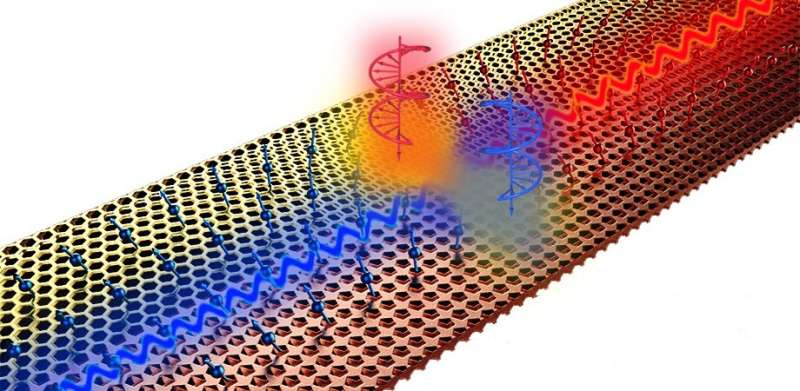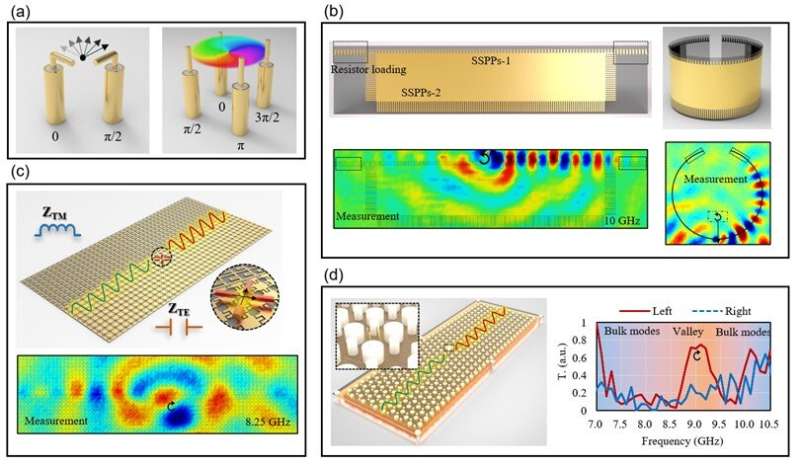Chiral sources for metamaterial interface waveguides

Metamaterial interface waveguides can confine and guide electromagnetic (EM) waves, which has attractive potential in integrated photonics physics and wireless devices, from radio frequencies to optical bands. The energy flow in waveguides can be fully controlled by sorting the near-field light waves according to their handedness (chirality), which determines the direction of energy transmission. Chirality sorting is an important process to develop in the field of chiral photonics. In the future, chiral-sorting metadevices may be fully digitized and programmable, so that reconfigurable unidirectional transmission routes and scattering performance of the artificial structures can be controlled simultaneously.
To get there, we must better understand the characteristics and possible applications of different edge modes. As reported in Advanced Photonics, researchers from Southeast University, Dalian Maritime University, and University of California at San Diego collaborated to visualize various unidirectional edge waves in microwave metamaterial interface waveguides, based on localized sources carrying spin angular momentum and orbital angular momentum.
In their work, they present a local light beam source, composed of an electric probe array. Their design includes a broadband feeding network to ensure the performance of the angular momentum of the light beams. For their systematic experiments, they established a near-field scanning platform to measure the unidirectional transmission directly. Based on their observations of three edge states—spoof surface plasmon polaritons, line waves, and valley topological insulators—they assess the advantages and disadvantages of each.

Overall, this research advances the field of chiral photonics science and promotes applications of chiral-sorting technology, particularly for microwave metadevices. According to corresponding author Tie Jun Cui of the State Key Laboratory of Millimeter Waves at Southeast University in Nanjing, "Developing the freedom of microwave angular momentum in the waveguides is meaningful to increase the channel capacity and to design robust and flexible devices. Based on various metamaterial interface waveguides, novel metadevices such as filters, splitters, antennas, and multiplexers can be widely utilized in radar and communication systems."
More information: Zhixia Xu et al, Near-field chiral excitation of universal spin-momentum locking transport of edge waves in microwave metamaterials, Advanced Photonics (2022). DOI: 10.1117/1.AP.4.4.046004
Provided by SPIE





















